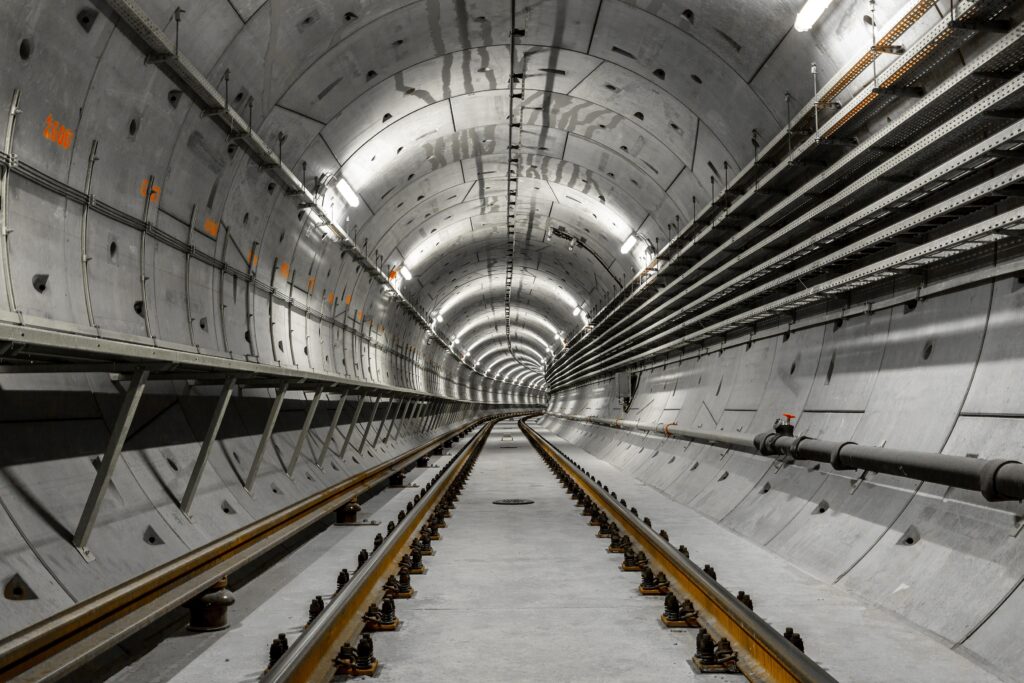During the construction stage, precast tunnel lining segments are frequently subjected to critical impact and concentrated loads. The edges and corners of segments are typically subjected to significantly higher stresses than the interior. Concrete damages in the form of cracking and spalling are very likely in these surface-near areas under such high-stress concentrations. Steel fibers, in addition to conventional rebar reinforcement, can be used to strengthen the concrete structure, even in the concrete cover, due to the crack-bridging effect and a randomly discrete distribution in the matrix.

Concrete is a well-established and dependable construction material for tunnel linings, but it has some weak performance characteristics that can be overcome by adding specialised fiber reinforcement.
Steel fiber reinforcement can improve the performance design requirements of segmental linings, with a focus on the beneficial effects of fiber reinforcement on cracking behaviour and toughness performance, resulting in a safe and durable tunnel lining. Designers and consultants are increasingly interested in not only the mechanical performance of fiber-reinforced concrete (FRC) for segmental linings but also the durability of the linings. Tunnel linings exposed to corrosion-prone media, such as wastewater sewer tunnels or desalination plant outfall tunnels, have stringent durability requirements. The design of these structures must include a thorough examination of durability issues. Concrete durability can be significantly improved with fiber reinforcement. Steel fibers’ beneficial effects on cracking behavior reduce permeability by narrowing the flow paths within the concrete. Crack-bridging steel fibers cause necking effects in bending cracks, resulting in earlier crack closure. Furthermore, steel fibers cause specific crack formations, significantly reducing flow rates through separation cracks. The results also show that using FRC can result in significant cost savings because the thickness of the linings can be reduced.
The addition of fibers has been shown to be effective in simplifying reinforcement in precast tunnel segments, allowing for total or partial replacement of conventional reinforcement depending on segment typology and fiber-reinforced concrete (FRC) toughness.
The widespread use of structural fibers in the initial (temporary) and final permanent) linings worldwide have demonstrated the importance of fibers in underground construction, with designers, engineers, and referring authorities increasingly interested. Fiber-reinforced concrete (FRC) segmental tunnel linings have been used in numerous projects around the world over the last 20 years. The ITA WG2 report provides a comprehensive overview of these projects (2015).
Structural fibers can be used to replace or reduce the use of traditional rebar cages, acting as the primary structural reinforcement. The use of fibers frequently results in significant cost savings; primarily by replacing ordinary reinforcement in the manufacturing process, but also by improving robustness, serviceability, and durability, thus lowering maintenance costs.


